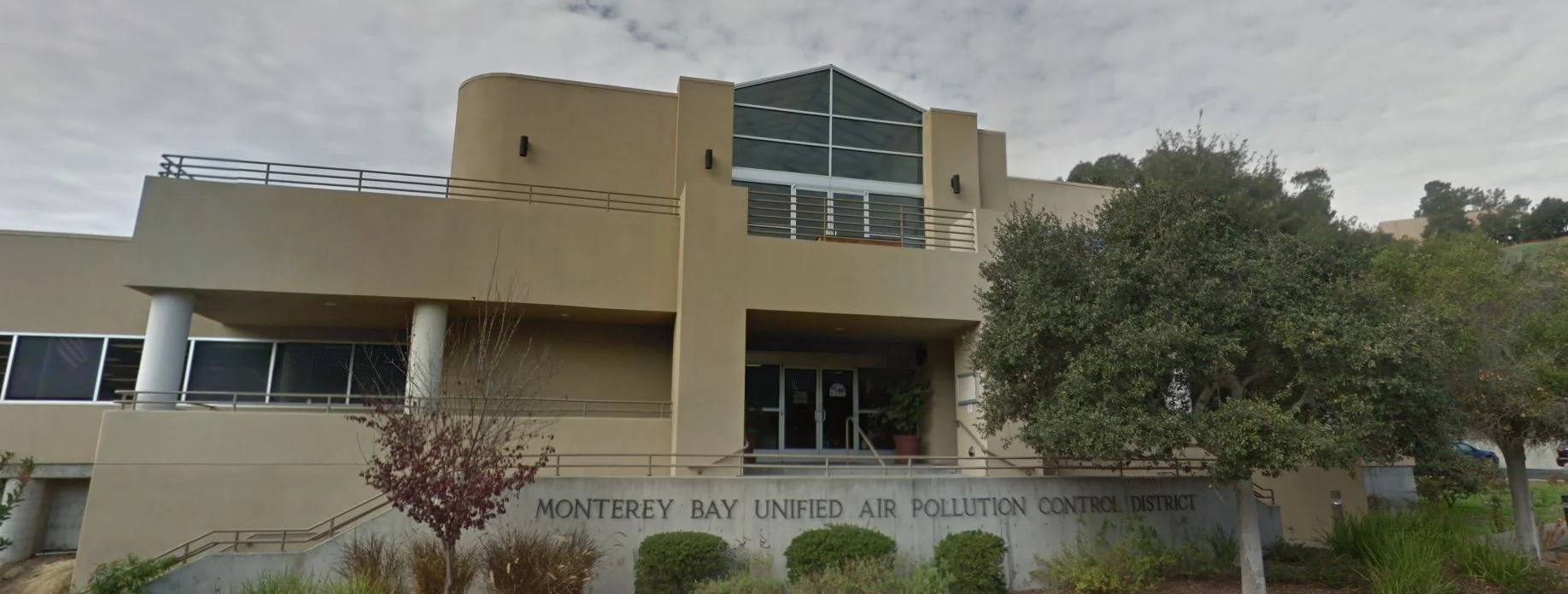Meeting Notes for CCJDC Virtual Meeting
October 27th, 2020
** GoToMeeting was used to facilitate this meeting**
· Bryan Kriete, chair, called the meeting to order at 9:34 am
o 9:35 am: Review of previous meeting’s minutes. Minutes approved
· No additions to agenda
· Participant intros/updates
o Bryan Kriete, GIS Analyst City of Santa Cruz Public Works
o Gina Schmidt, GIS Coordinator for AMBAG, is working on rolling out ArcGIS Enterprise, launching mapping applications. Set up named users outside our agency for editing access to planning departments to capture local land use data for AMBAG’s long range MTP/SCS Plan.
o Jeanette Favaloro, CSUMB, stated she is not directly involved in GIS right now, just listening in for now.
o Will Condon, Planner at AMBAG, noted he is working on reviewing and verifying datasets for AMBAG’s travel model, and working with CARB’s EMFAC model.
o Austin Robey, GIS Coordinator at City of Watsonville, noted that staff is very close to rolling out CityWorks for water folks. Waiting on an update which should be out next month. Using Collector and CityWorks mobile application. Also working on Enterprise. Editing geometric networks.
o Nakul Bhatia: ESRI
o Dario Moreno, Caltrans District 5 GIS Coordinator, Working on ATP plan for District 5. Working with SLO County for Virtual GIS day and maintenance viewer and data. Going through agreements and post modeling.
o Joseph Londono, GIS with Caltrans District 5, working with post-models
o Chad Miller, GIS Analyst in Information Technology Department of County of Monterey, working with ArcGIS Enterprise development, lots of ArcGIS Enterprise administration and application development.
o Matthieu Denuelle, ESRI, Work with Caltrans, CalFire, Counties
o Carol Ostergren, USGS, LIDAR for Central Coast funded by FEMA still not showing on National Maps, have data drives moving around. If we don’t have it yet, let her know and she will get drive to us. Santa Cruz County data on ftp site. Working closely with the state, but has no information or funding for post burn Lidar data collection. If people need assistance, can help coordinate with that. Not sure if supplemental Congressional money will exist to capture new burn data. Santa Cruz county quality level 1 collected last spring, funded by San Mateo Conservation and Santa Cruz tree people. Data processed and submitted to national maps, hopefully available soon.
§ Email: costergren@usgs.gov
§ Mail drives to 219 Appleton Drive Aptos, 95003
§ 2020 QL1 Santa Cruz LiDAR: https://drive.google.com/file/d/1z-u_-1mOy0HAD6_FaABvVFG9VRRPP1mI/view?usp=sharing
§ A couple of the Santa Cruz 2020 products can be downloaded here. They could be the same ones SCC is serving. ftp://ftpext.usgs.gov/pub/wr/ca/menlo.park/costergren/
§ Austin noted he has a drive for Monterey and parts of Santa Cruz, he can share if need be. Chad Miller has hard drive for Monterey County. Both drives will be sent back to Carol ASAP.
· 9:52am: Wildfire Impacts
o Chad Miller supported IC for the 3 fires. Made use of ArcGIS Enterprise to send up some apps quickly for evacuation zones. GIS Enterprise for post damage assessment. Evac zones were viral and crashed systems. Moved it onto ArcGIS online, want to make data center more sophisticated
o Bryan Kriete made apps for Santa Cruz county using Survey123 to locate damaged structures, issues with parcel lines; with structures damaged it is hard to say which parcel they were on. Lost over 500 signs with PostMiles and hired contractors trying to get post miles. Using Survey123 to get signs, culverts, etc. mapped. Doing a lot of work for debris flow evacuation zones mapped. Survey123 saved them, due to cell service but haven’t implemented something that would work to collect points and then map them with devices when service resumes. San Lorenzo Valley maps are difficult with lots of unknown factors and rugged terrain.
o Joe Londono- Caltrans having issues with parcels not lining up with imagery. Especially difficult with shadows and trees to determine property boundaries and resulting impacts of fires and trying to determine which property has structures burnt or damaged.
o Chad Miller mentioned CalFire going to USGS for info on potential debris flows for Monterey County. Asked if Santa Cruz fire SCU? Did CalFire go and do work on Environmental Rapid Response Team report? For Dolan Fire, USFS also used USGS and BareEarth. Carmel/Salinas Fire was CalFire. CalFire was more sophisticated and got data from USGS. CalFire got report out and distribution of data. Soil burn severity was leveraged from USGS. Mass transportation evacuation plans called ZoneHaven in Santa Cruz County, and that Governor Newsom wants a statewide ZoneHaven. (Bryan mentioned that Matt Price was hesitant about ZoneHaven. Austin mentioned to take a look at services to automatically push via ArcGIS enterprise collaborations and synching).
o Matthieu, ESRI, said statewide EOS wants statewide county data drive process for fire and evacuation mapping. He said to use Geo-Jobe to help. GeoJobe has good tools for moving content on Enterprise (https://www.geo-jobe.com/admin-tools/ )
§ Set up user accounts, move content between users in same organization, then no cost but cost associated with other actions
· 10:20 am: Nakul Bhatia presented on ArcGIS Insights Dashboard
o Austin asked if intermediate data creates additional dataset in your datastore? Nakul replied that it does.
· 11:01 am: Dario Moreno (Caltrans) presented on Active Transportation Model and supporting dashboards
· 11:20 am: Bryan Kriete presented Santa Cruz Department of Public Works Transportation Dashboards
· 11:50 am: Dario Moreno outlined the GIS Day plan for SLO County
· Next meeting will be in January 2021, Tuesday possibly 3rd week of month.
· 11:54 am: Meeting adjourned



